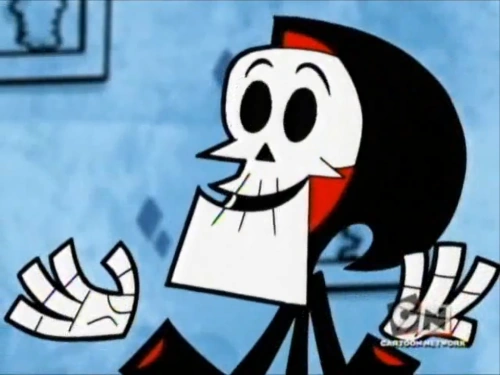 |
| Ted, voiced by Seth MacFarlane, celebrates in a scene from "Ted 2." Photo courtesy Universal. |
I'm really, really trying to determine why the “Ted” movies are a thing. I mean, I know why a studio opted to spend money to make two “Ted” films – the box office recoup from the first run through was quite impressive – but, after watching the second film and hopping over the first one, I don’t get it. I don't understand the love audiences have for the central character, or his sidekick, or the humor, or really anything about the “Ted” franchise. I’m most perplexed why people have and will hand over even more money – enough to justify a third one, more than likely – to support a vain, bothersome, atavistic piece of pablum passing itself off as a comedy?
Perhaps the answer to those questions falls upon director/co-writer/voice of Ted Seth MacFarlane, whose career has shifted from the creator of a failed television show to the mastermind of a media empire centered on that same failure. (What did Fitzgerald say again about second acts?) The man has a very specific comedy template, one used once a week on the capital of his domain, “Family Guy.” There's vulgarity, a plethora of pop-culture references, an entity that talks even though it shouldn't, heaping doses of offensiveness, even larger doses of solipsism, homophobia, regressive male behavior, mistreated female characters, and a weak attempt at finding heart.
You can find all of it in “Ted 2,” which features MacFarlane's irascible Bostonian bear making lewd, puerile jokes and gestures alongside his best friend and equally loathsome creature John (Mark Wahlberg). The crude Pooh knockoff opens the film marrying the woman I gather he started seeing in the first film, Tami-Lynn (Jessica Barth), although the marriage starts cracking at the seams because she married a talking teddy bear incapable of anything resembling sex. For whatever reason, MacFarlane's Boo-Boo decides having a kid will improve their marriage (just terrible, terrible logic), which, after some semen-based shenanigans and a failed adoption attempt, results in the state of Massachusetts declaring the stuffed animal to be a piece of property and not a person.
Thus, a civil rights lawsuit is launched to reverse the decision, spearheaded by comely, neophyte attorney/pothead Samantha Jackson (Amanda Seyfried), who becomes Marky Mark's token love interest because of course she does. There's also an underdeveloped subplot about a creepy janitor named Donny (Giovanni Ribisi) who wants to make his own version of the little fuzzy Ursa after nearly killing him in the first film. He works as a janitor at Hasbro, a company that should have declined to participate in this.
 |
| Another moment Hasbro should have backed away from. |
So that's “Ted 2” in a nutshell, sans the patented MacFarlane brand of humor taken up a few notches thanks to the “R” rating he gets to play with. He tries ever so hard to offend, chucking as much dirty material into his script as humanly possible to either appeal to the lowest common denominator or rile up people he considers too sensitive. He’s like an 8 year old learning to curse for the first time: It's a little annoying at first but you kind of start feeling bad for the little guy because, gosh darn it, he's giving it his best shot and you don’t want to see him start crying.
Crudeness can't compensate for laziness, a trait MacFarlane exhibits in spades. The man is the master of using dated references – viewers get an unnecessarily long “Breakfast Club” montage and an homage to “Jurassic Park.” – just to tell the audience that, yes, he remembers flicks like “Flash Gordon” too. His punchlines are simple, obvious, staid and reflect minimal levels of original thought. Hell, his jokes even disrupt the film’s time line: Wahlberg drops a Tom Brady joke centered on recent legal events, but MacFarlane and his co-writers kept in a one liner about a Boston clothing company that closed four years ago.
 |
| It was something of a local icon for New Englanders. |
There's no precision to the humor in “Ted 2,” or really in anything MacFarlane does. He's a comedic grenadier, a person who just launches explosive after explosive after explosive hoping a few of them hit something. Inevitably, some shrapnel will strike – an early cameo has a satisfactory conclusion after the end credits – but the majority of MacFarlane's one-man offensive lands harmlessly in a vacant field, miles away from their intended target.
None of this would irritate so much if the characters had some redeeming value. Alas, MacFarlane's Teddy Ruxpin knockoff and Wahlberg spend their free time pulling mean, childish pranks on people and aspiring to be the worst versions of themselves. Wahlberg complains at one point that his ex-wife wanted to change him; I have a hard time blaming her.
So, again, why is the “Ted” series a thing? Why do people want to watch stale jokes about Neil Diamond songs accompanied by a gay marriage parallel that manages to offend gay people? Most importantly, why do audiences continue to enable MacFarlane?
Review: One and a half out of Five Stars
Click here to see the trailer.
Rating: R
Run time: 115 minutes
Genre: Comedy
Ask Away
Target audience: Seth MacFarlane sycophants.
Target audience: Seth MacFarlane sycophants.
Take the whole family?: The teddy bear is moderately cute, but the vulgar things he says and does make the movie rather inappropriate for kiddos. Stick within striking distance of the “R” rating.
Theater or Netflix?: Don't blow your cash on the theater.
What is it with Seth MacFarlane and women? I have no idea what happened to him to give him such disdain for the opposite sex, but he does have a problem with them. The women in “Ted 2” are denigrated, demeaned and shamed for not acting like perpetual 13-year-old boys. The problem isn't limited to this film either; the things “Family Guy” have done to Meg and other female characters are grotesque.
A few examples, if I may.
Watch this instead?: There's nothing wrong with juvenile humor when it's done right. Take the “21 Jump Street” adaptation, which grounds those jokes in some legitimate emotional stakes and even has characters to root for.










